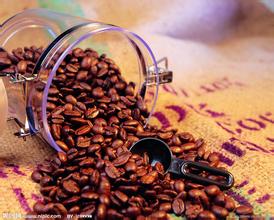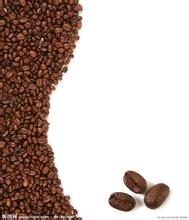Introduction to the characteristics of coffee flavor and taste of lemon manor in Nicaragua
Columbus sailed here in 1502 and reached the east coast of Nicaragua. In 1522, Spanish colonists began conquering the area. In 1524 the cities of Granada and Leon were founded. From then on, Nicaragua became a Spanish colony and was placed under the jurisdiction of the Governor General of Guatemala. León became a political and cultural centre; Granada became a commercial and agricultural centre. In the later period of colonial rule, the large manor economy developed to a certain extent, and beef, cocoa and indigo became the main products. It became a Spanish colony in 1525. In the mid-17th century, Britain occupied the Mosquito coast and declared it a British protectorate. It was not until the London Agreement signed with Spain in 1786 that it temporarily withdrew from Managua, the capital of Nicaragua. Managua is located in the west of the border, on the south bank of Lake Managua, and hence its name. 140 kilometers northwest of Corinto Harbor on the Pacific coast. 55 meters above sea level. It is a beautiful Spanish city. Because it is located on the east side of the Pacific volcanic seismic belt, the city has experienced four strong earthquakes in the past 100 years, of which one in December 1972 caused the most damage to the city. The reconstructed Managua has taken important measures to reduce population density, relocate large enterprises and improve the earthquake resistance of buildings. The word Managua comes from the Nahual language of the Indians and has two meanings, one is "Mexican place" and the other is "water side". About 10,000 years ago, there was human activity on the banks of Managua Lake, and traces of ancient human activity can be seen from the ruins of Akolink. Due to natural disasters such as earthquakes, residents have moved many times. When the Spanish conquered Nicaragua in the early 16th century, it was still an important Indian town. It became a city in 1846. In 1852 it was designated the capital of the Republic. From then on, it became the political center of the country.
Nicaragua is located in central Central America, bordered by the Pacific Ocean to the west and the Caribbean Sea to the east. North central highlands, coastal plains to the east, is part of the Central American volcanic belt. The eastern plain is hot and rainy, and has a tropical marine climate. Suitable climate provides a good growing environment for coffee cultivation.
High quality Nicaragua coffee, grown in the north and centre of the country. Coffee is Nicaragua's pillar industry, producing nearly a hundred thousand tons of coffee beans every year. Many people who have tasted Nicaragua coffee usually think that it is no different from Salvadoran coffee or Honduran coffee. It is rich aroma, smooth and delicate, slightly bitter finish, as if the wine in the faint flavor.
In many countries coffee production is severely affected for political reasons. The coffee industry in Nicaragua is no exception. The revolution of 1979 forced coffee growers to flee to Miami. A period of uncertainty ensued as the government considered whether to reallocate land, including many plantations, resulting in a shortage of coffee supplies and a decline in production, from more than 1 million bags in the early 1970s to less than 600,000 bags in 1990. Now the government has liberalized the coffee industry and private owners have taken control of the market. The best coffees are grown in Sinotega, Matagalpa, and Nueva Segovia. They are pleasant with moderate acidity and a good aroma. Nicaragua is one of the poorest countries in Central America. Because of its poor economic base, the coffee industry is still in a relatively backward state, while coffee farmers are in a state of extreme poverty. Fortunately, Nicaragua's coffee has received some foreign aid funds to improve the quality of its coffee. Nicaragua's Madagelba, Chinodega, Segovia region of coffee produced by coffee lovers respected the world. In particular, coffee grown in the Madagerba region tastes very similar to Kenyan AA coffee.
When tasting Nicaragua coffee, it is best to drink a mouthful of cold water first, so that you can better feel its mellow taste. Drink coffee while it is hot, because tannic acid in Nicaragua coffee is easy to change in the process of cooling, which makes the taste sour and affects the flavor of coffee. You can add the right amount of sugar, and then add creamer. Enjoy a cup of high-quality Nicaragua coffee, not only to experience the different levels of coffee taste, but also to enhance the ability to appreciate coffee

Important Notice :
前街咖啡 FrontStreet Coffee has moved to new addredd:
FrontStreet Coffee Address: 315,Donghua East Road,GuangZhou
Tel:020 38364473
- Prev

Refreshing and comfortable citrus taste of Panamanian Erida Manor Coffee Flavor Coffee introduction
Vice President Varela, candidate of the Naamist Party, won the presidential conference.
- Next

Introduction to the coffee flavor and taste of the refreshing and elegant Paradise Bird Manor in Papua New Guinea
Papua New Guinea is an island country in the western South Pacific and a member of the Commonwealth. The name of the country consists of Papua and New Guinea. There are many small islands here, about 600 in size. It is adjacent to Indonesia and Australia to the south. It belongs to the Asia-Pacific region, but it is a country in Oceania. Located in the tropical climate, high temperature and rainy. Rich and rich volcanic rock and soil
Related
- Does Rose Summer choose Blue, Green or Red? Detailed explanation of Rose Summer Coffee plots and Classification in Panamanian Jade Manor
- What is the difference between the origin, producing area, processing plant, cooperative and manor of coffee beans?
- How fine does the espresso powder fit? how to grind the espresso?
- Sca coffee roasting degree color card coffee roasting degree 8 roasting color values what do you mean?
- The practice of lattes: how to make lattes at home
- Introduction to Indonesian Fine Coffee beans-- Java Coffee producing area of Indonesian Arabica Coffee
- How much will the flavor of light and medium roasted rose summer be expressed? What baking level is rose summer suitable for?
- Introduction to the characteristics of washing, sun-drying or wet-planing coffee commonly used in Mantenin, Indonesia
- Price characteristics of Arabica Coffee Bean Starbucks introduction to Manning Coffee Bean Taste producing area Variety Manor
- What is the authentic Yega flavor? What are the flavor characteristics of the really excellent Yejasuffi coffee beans?

